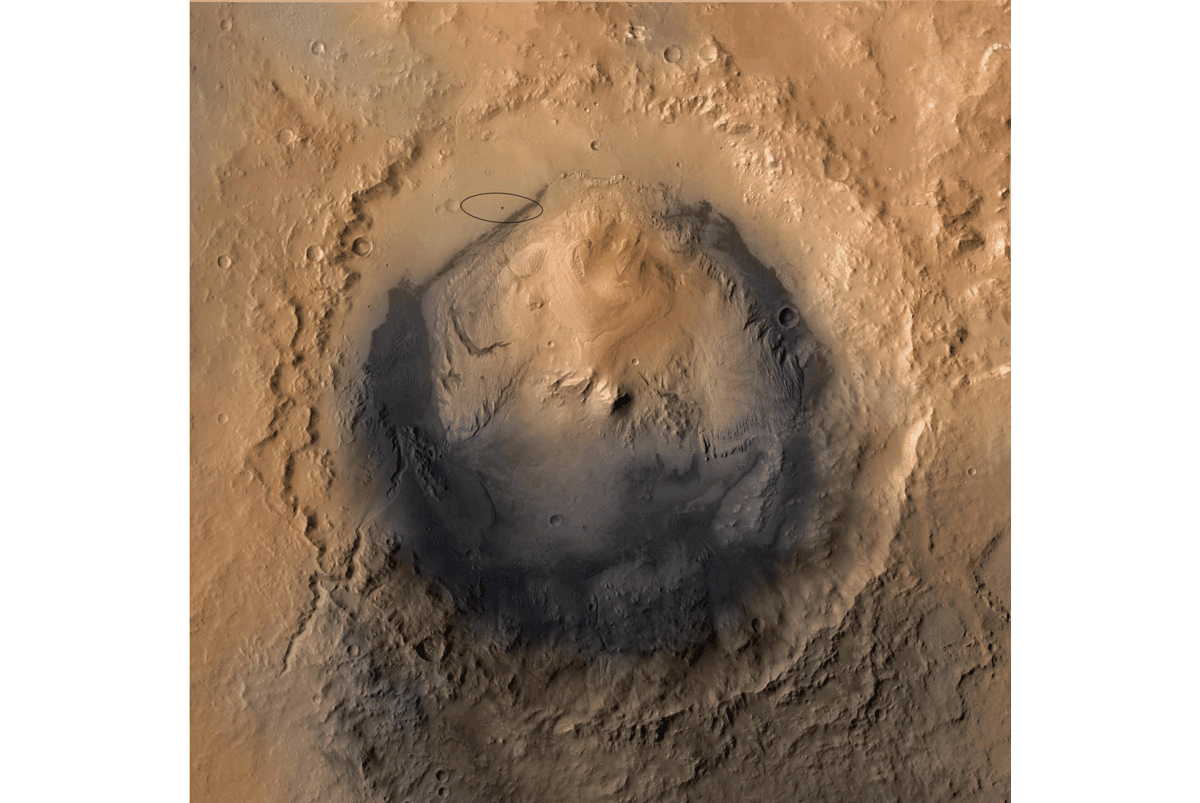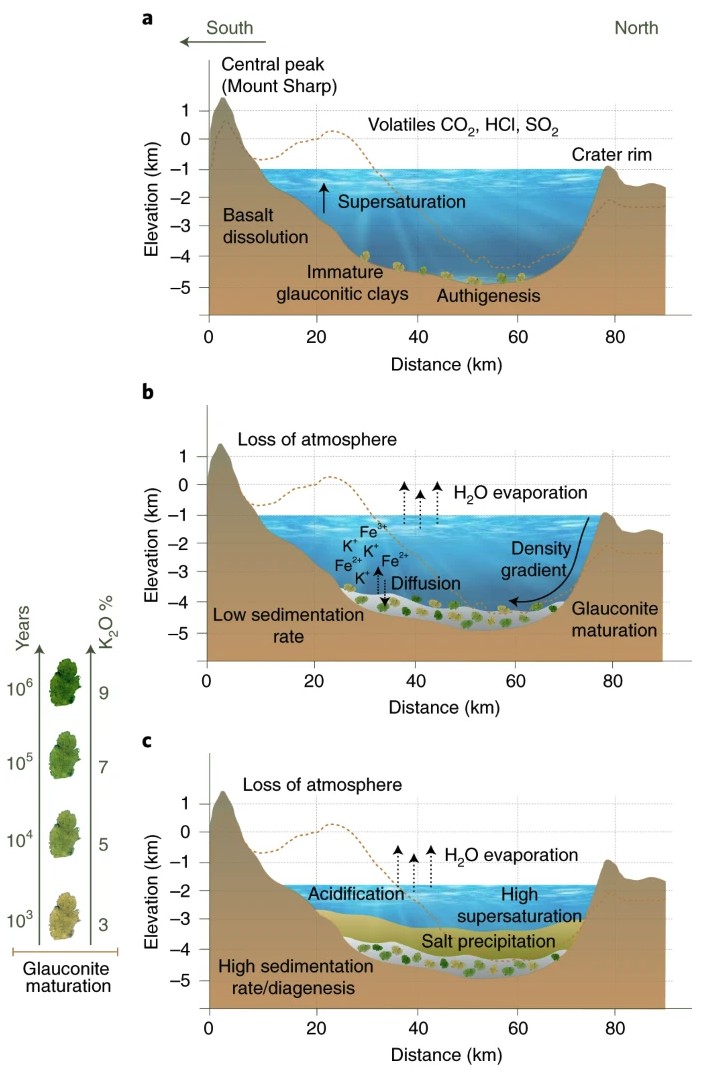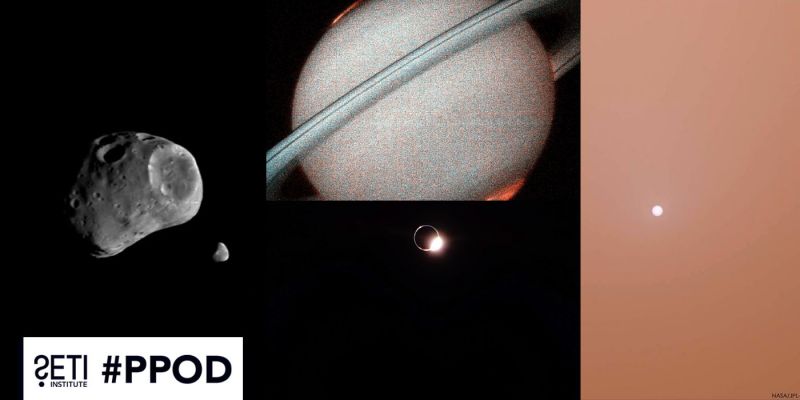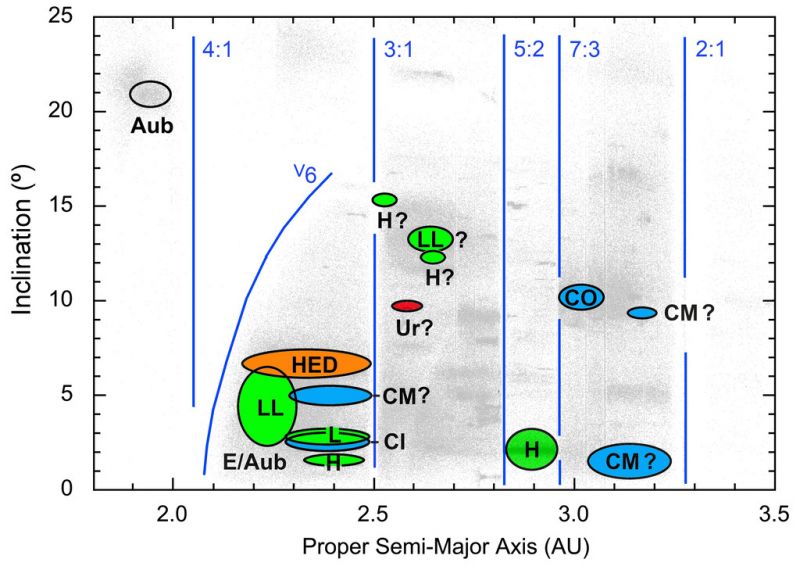
Since 2012, the Mars Science Laboratory Curiosity rover has been exploring Gale crater on Mars and investigating whether the Red Planet ever had the environmental conditions to support microbial life. Gale crater, which formed about 3.7 billion years ago, is likely the site of an ancient lake. Gale crater is 96 miles in diameter, but the mountain at its center, Aeolis Mons, is 18,000 ft. high.
One of the instruments onboard Curiosity is called CheMin (Chemistry and Mineralogy). CheMin uses X-ray diffraction to analyze rock and soil samples collected by Curiosity and determine the types of minerals present in the samples.
A recent study of clay minerals identified by Curiosity at Gale crater discovered something new about the form of the phyllosilicates in a section of the rock analyzed by CheMin. Phyllosilicates are a group of minerals with a layered structure that include micas, chlorite and smectites (also called swelling clays).
Phyllosilicates form under various conditions and can often be used as markers to retrace history in geochemical detective work. Glauconitic clays, mainly found on Earth in both marine and lacustrine environments, were identified in this study from specific types of disorder in the mineral structure. These disorders include stacking faults and layer rotation caused by intergrown smectite and glauconite minerals that each have a distinct structure and produce an unusual pattern when they grow together.
Different from many other types of phyllosilicates, these glauconitic clays are excellent indicators of calm lake conditions. “They only form when lake sediments reside for thousands of years at the interface between oxidizing and reducing environments,” said lead author Elisabeth Losa-Adams of the Departamento de Geociencias Marinas, Universidade de Vigo, Lagoas-Marcosende, Vigo, Spain.
The findings of this study help explain differences between clay minerals investigated by Curiosity along its trek through different types of rock in Gale crater. “Smectite clays are common on Mars and are observed across much of the planet from orbital studies, but glauconitic clays are more unusual,” said co-author Janice Bishop of the SETI Institute.

Glauconitization has been found in multiple lake settings on Earth, including saline lakes with elevated salt levels formed through evaporation and precipitation and in Precambrian lakes through inorganic processes before life arose. While the presence of glauconitic clays does not mean that life was present on Mars, the neutral pH, moderate temperature, and long-lasting calm waters could have provided a perfect niche for microbes to flourish if they were present at Gale crater.
This research was published in Nature June 28, 2021: Long-lasting habitable periods in Gale crater constrained by glauconitic clays. The full paper is available at https://rdcu.be/cnlxZ.





